#Ernst Gamperl
Explore tagged Tumblr posts
Text

Ernst Gamperl [gallery]
2 notes
·
View notes
Text
Ernst Gamperl - Transformation und Bewegung: München vom 27.06. bis 02.08. 2025
40 Jahre Ernst Gamperl in der Galerie Handwerk: Die Leidenschaft für das Drechseln entdeckte Ernst Gamperl bereits während seiner Ausbildung zum Schreiner. Er gründete unmittelbar nach der Gesellenprüfung sein erstes Atelier und widmete sich ganz der Erforschung dieses Handwerks. Bereits für sein Debüt im Jahr 1992 in der Sonderschau »TALENTE – gestaltendes Handwerk« auf der Internationalen…
#angewandte Kunst#Baum#Bayerisches Nationalmuseum#Dannerstiftung#Dialog mit dem Holz#Drechselkunst#Ernst Gamperl#Gefäße#Handwerkskunst#Holz#Inspiration#Kunst#Kunsthandwerk#Lebensbaum#München#Retrospektive#Stamm
0 notes
Text





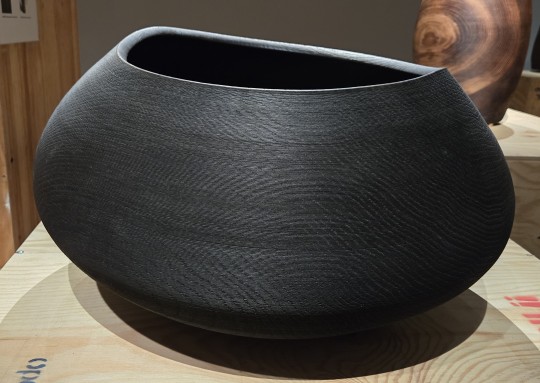
Wat? 75/2018//230 Eiche, gekalkt, geölt, 33/2015//230 Eiche, gebleicht, gekalkt, gewachst, 32/2016//230 Eiche, gekalkt, mit Lehmerden geschlämmt, gewachst, 18/2016//230 Eiche, mit Eisenoxid geschwärzt, gewachst, 70/2013//230 Eiche, leicht gebleicht, gekalkt, gewachst en 190/2011//230 Eiche, mit Eisenoxid geschwärzt, geölt, gewachst
Waar? Tentoonstelling Ernst Gamperl – Das Lebensbaum Projekt in Bayerischen Nationalmuseum, München
Wanneer? 16 mei 2025
In 2008 ontwortelde een storm een enorme, tweehonderddertig jaar oude eik in Ross am Inn. Voor kunstenaar Ernst Gamperl vormde de ontwortelde boom de inspiratie tot en het uitgangspunt voor een tien jaar durend project: Das Lebensbaumprojekt.
De eik had een doorsnee van 2,7 meter en woog 33 ton. Uit deze gigantische boom schiep Gamperl zevenennegentig vaten met diverse vormen. Natuurlijke elementen als de aanhechtingspunten van takken, breuken en scheuren vormen onderdeel van de ontwerpen. De vaak monumentale vorm van de vaten staat in contrast met hun veelal dunne wand.
Ernst Gamperl werd in 1965 geboren en begon in 1990, na een leertijd als timmerman, zijn eigen atelier. Hij leerde zichzelf houtdraaien. Gamperl werkt uitsluitend met Europees hout, voornamelijk eiken. Met zijn werk won hij verschillende prijzen op het gebied van ambachtelijk handwerk.
In 2017 ontving Gamerl voor het Lebensbaumprojekt de Loewe Foundation Craft Prize. De jury oordeelde: “Dit is een object dat zowel mooi is als ons de waarde van recycling leert. Het is gebaseerd op het redden van omgevallen bomen en het met vakmanschap weer tot leven brengen van de natuur. Het is het werk van een begaafd vakman die de bijzondere gave heeft een eigen, unieke stem te hebben ontwikkeld.”
0 notes
Text
Tipp: Das Lebensbaumprojekt - Ernst Gamperl
15.05.–05.10.2025 im Bayerischen Nationalmuseum München Der international renommierte Künstler Ernst Gamperl (geb. 1965) hat die historische Technik des Drechselns revolutioniert und neue Maßstäbe in diesem Handwerk gesetzt. Mit einer an Magie grenzenden Bearbeitungstechnik modelliert er faszinierende Gefäße und Objekte. Ernst Gamperl in seiner Werkstatt Die Ausstellung präsentiert Ernst…
#Ausstellung#Bayerisches Nationalmuseum#Das Lebensbaumprojekt#Drechseln#Ernst Gamperl#Exhibition#Gefässe und Objekte#Handwerk#Holz#Kunstausstellung#Lebensbaum#Manuela Mordhorst#München#Soloausstellung
0 notes
Text
Nik Bärtsch's Ronin - SPIN
SPIN is the 9th release of the working band RONIN since its foundation in 2001 and the first with the new bass player Jeremias Keller, who joined the band in 2020. The band still consists of the founding members Nik Bärtsch and drummer Kaspar Rast and reeds player Sha who is part of the group since 2004. Since their last release AWASE (ECM 2018) the band has continuously developed the repertoire further in their weekly concerts on Monday - even during the Corona time - at the own EXIL club in Zurich. In January 2024 they played MONTAGS concert number 1000 and will celebrate 20 years of Monday concerts this November. The new album therefore shows not only the newest developments like Modul 63 and Modul 66 but also a combination of new and old material in Modul 70_51 (51 recorded on the ECM album “Llyría”, 2010) and the two classics Modul 14 and Modul 23 in completely new arrangements and interpretations. Originally characterized as zenfunk because of its combination of minimalistic emptiness and highly intensive groove, the band's style now develops into a kind of nanofunk with even more refinement, details and nuances on the micro level of music making. Text: Kim Longin, Ronin Rhythm Records The record will be released together with the documentary film "Ingredients for Disaster" and with a series of six short film episodes about the bands work, philosophy and history on Nik's YouTube channel by British director Julian Phillips. LINE UP: Nik Bärtsch: piano, keyboard Sha: bass clarinet, alto saxophon Jeremias Keller: bass Kaspar Rast: drums Recorded September 2023 at Mazzive Sound Studio Bellmund by Lars Dölle Mixed by Lars Dölle, Redhill Sound & RONIN Mastered by André Pousaz, Sound Lab Music composed by Nik Bärtsch. RONIN is a musical organism and creates the music by playing together over years Album produced by Nik Bärtsch Published by Ronin Rhythm Productions & Neonstars Publishing The album title SPIN was inspired by several musical, kinetic, natural, mental and social spin moments. The cover of the album shows a part of the works “3/2024//7235” and “4/2024//235” (Oak) by art carpenter Ernst Gamperl, photographed by Bernhard Spöttel. Ernst Gamperl has worked together with Nik Bärtsch in live performances where they created wood works and music.
5 notes
·
View notes
Photo

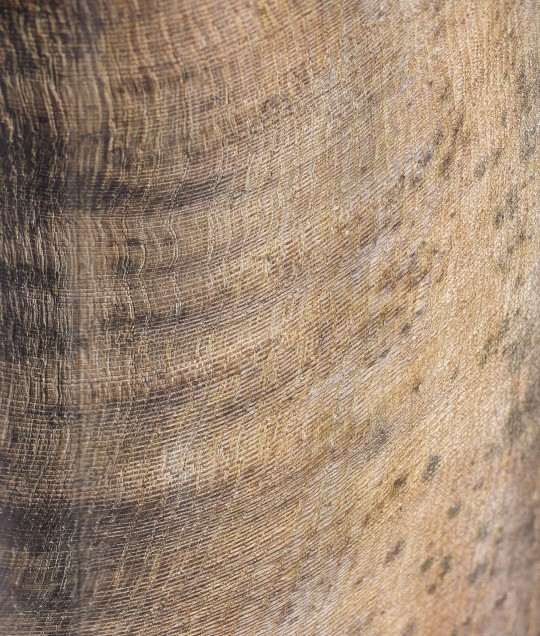








Ernst Gamperl: Zwiesprache | Dialogue
Achim Heine, Ernst Gamperl, Markus Rigert
edition Cantz, Berlin 2019 , 252 pages, 80 color and 45 duotone,english/german, ISBN 978-3-947563-57-9
euro 42,00
email if you want to buy [email protected]
Unique wooden sculptures as the result of a ten‑year process
Ernst Gamperl is fascinated by the dialogue with living material and the quality of the unpredictable. He creates room-sized wooden objects, into the design of which he incorporates the natural drying process, cracks, and irregularities—this revolutionary technique of woodturning has led to completely new standards. Technically often at the limits of what is feasible, he creates sculptures of great power. Following exhibitions that were also well received in Japan and Korea, the Gewerbemuseum Winterthur is now presenting Ernst Gamperl’s Tree of Life project for the first time, which will then travel to other venues. In a ten-year process, Gamperl transformed a roughly 230-year-old uprooted oak into an ensemble of vessels and sculptures. The artist’s book conveys the fascination of the material and the craft, brings us close to the objects, and documents the challenging work process.
17/02/20
orders to: [email protected]
ordini a: [email protected]
twitter:@fashionbooksmi
instagram: fashionbooksmilano
designbooksmilano
tumblr: fashionbooksmilano
designbooksmilano
#Ernst Gamperl#wooden sculpturs#art exhibition catalogue#Gewerbemuseum Winterthur#fashion inspirations#fashionbooksmilano
3 notes
·
View notes
Photo

Bowl, Ernst Gamperl, 1997, Minneapolis Institute of Art: Decorative Arts, Textiles and Sculpture
round form with rounded bottom; slightly inward- tapering rim; wide mouth opening; body decorated with incised concentric circles, one on each side and horizontal lines, forming close pattern; dark wood finish This thickly walled, nearly spherical bowl is turned from ebony, a dense and hard African wood. The sleek interior contrasts with the bowl’s exterior. Gamperl textured it by carving narrow, regular grooves, turning the bowl 90 degrees, then repeating the carved pattern. He did not sign the vessels’ rounded bottom, so as not to disturb its evenness of form. The artist’s focus on the perfection of form, proportion, and pattern attainable on the lathe recalls the beginnings of modern woodturning in the late Renaissance and early Baroque periods, when objects turned in accordance with regular, mathematical principles were seen to embody the harmony between matter and spirit. Size: 5 13/16 x 6 3/8 x 6 3/8 in. (14.76 x 16.19 x 16.19 cm) Medium: African ebony
https://collections.artsmia.org/art/115270/
2 notes
·
View notes
Text
Loewe Craft Prize 2017: Tracing the Line Between Art and Craft
What separates art and craft? It’s a line that is almost deliberately blurred in the Loewe Craft Prize, the Loewe Foundation’s award for artisans and craftsmen.
Launched last year by creative director J.W. Anderson, the prize is designed to “acknowledge the importance of craft in today’s culture, and recognize working artisans whose talent, vision, and will to innovate will set a standard for the future,” according to the brand. Open to entrants around the world from disciplines as far ranging as woodwork, textiles and ceramics, this year the panel received 4,000 entrants from over 75 different countries. 26 of them were selected to become part of a moving exhibition that was previously at Madrid’s COAM, and was on at Chamber Gallery in New York until June 6 (the exhibition will continue to Paris in September, Tokyo in November, and London in February 2018).
There are some truly breathtaking entries, from trophy winner Ernst Gamperl’s oversized oak vase, crafted by the German woodturner from a 300-year-old tree that fell during the storm, to the Belgian artist Sylvie Vandenhoucke’s ‘Converging Line’, where miniature panels of textured glass, cast in the pâte de verre technique, are layered for a two-toned piece that evokes the contemplative introspection of a rainy day. Danish goldsmith Kim Buck’s gold signet rings come from his Puffed Up series, which tells you everything you need to know: welded from lightweight 999.9 karat gold, the rings are inflated with hot air to resemble ultra-luxurious balloons that will slowly deflate, as a metaphor for the risks of ego.
Indeed, if the idea of a craft prize conjures up images of square quilts and homemade pom poms, then you’ll need to think again; the closest thing to any bedspread here is a luxurious, detail-saturated tapestry of rainforest birds and a dog by Argentinean duo Chiachio & Giannone. Whimsical and colorful, the piece is a testament to the delights of needlework, and the humor it can convey. And in the hands of Mexican family collective Artesnías Panikua, humble wheat fiber is woven into an intricate tribute to the indigenous Purépecha sun deity, and was awarded a special mention from the jury for its ability to “arouse feelings before one begins to [even] rationalize it.”
Unlike art, which can at times feel like it belongs in a rarefied world that’s disconnected from the realities of life, craft connects to heritage and tradition. As Anderson puts it, “Craft is always going to be modern. It is about creating objects that have a formula of their own and speak their own language, creating a dialogue that didn't exist before. It is about newness as much as it is about tradition."
Head image: Lauren Coleman (Chamber Gallery)
#Loewe Foundation#New York#Craftsmanship#J.W. Anderson#Loewe Craft Prize#Chamber Gallery#Lino Tagliapietra#Sangwoo Kim#Ernst Gamperl#Sylvie Vandenhoucke#Kim Buck#Chiachio & Giannone#Artesnías Panikua
0 notes
Photo



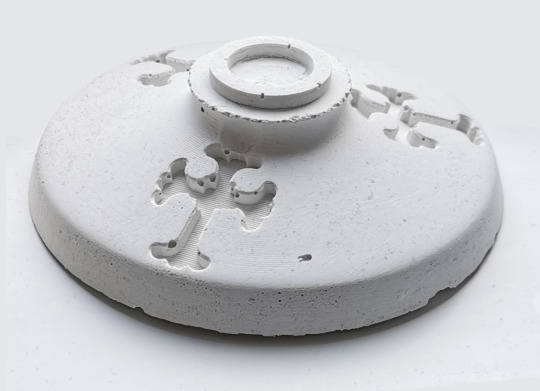

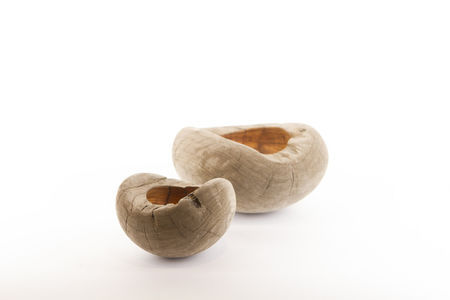
Reconsidering Project presentation
picture credits Descending order:
Myself
Neri Oxman
Neri Oxman
Myself
Ernst Gamperl
Ernst Gamperl
During the writing of my project revaluation, I began to question the format in which I could present my work and how the concept as whole could be reinterpreted. This change was driven by research into exhibitions that were both visually attractive and embodied what I want for my practice. It was also realised through photographing of my work which gave me pause to consider the way I am working and why. Through a combination of these activities, I have come to a point of consideration, where I must assess my work challenging what it is and what it is becoming. Above I have included imagery from my own project as well as work from Neri Oxman and Ernst Gamperl, with the aim of demonstrating the possibilities I have if I peruse this path. Through using a more gallery appropriate use of photography, I can assume a new perspective to view my work and see other avenues for exploration. This form of photography in union with my research has made me consider changing the way I present my work and with it change how it communicates its message.
The new option I have begun to consider consists of using my moulds to create a series of chalices comprised of varying materials. These materials would be chosen based upon they are conceptual and visual value that they add to the collection. An example of this is the soap chalice that communicates messages associated with consumerism, mass production and ritual cannibalistic practices, however, by having other chalices comprised of other materials I might be able to add more to the dialogue to the work. Although I can see the potential flaw that I would be overreaching and doing too much, I want to explore the benefits of what this approach can offer before rejecting it. These primarily being the aesthetic advantage and awe that can be gained from increased scale, as well as the capacity to communicate more and in varying ways. As I progress in this project I have been recommended by peers and tutors to increase scale to make the work more visually commanding, I agree with these comments, but I realise that I can only increase the scale to a certain threshold before it becomes too technically challenging. It is at this point that I began considering scale and how this is not only size but repetition, I think that the impression gained from having a series of slightly larger Chalices, could be greater than one huge chalice. This is derived from my own experiences with exhibitions, an example being Neri Oxman’s Lazarus Death Masks which I have included above. On a personal note, it is the most effective exhibition I have witnessed in its capacity to catalyse thought and emotion and is the result of the methods I am considering. This work stands as an example for which I wish to live up to and naturally I would be glad to take inspiration.
The scope gained through using multiples allows me to spread the themes I wish to communicate further and navigate them more focused. Instead of trying to communicate all my ideas in one chalice I can assign a certain theme to certain chalices and allow them to cohesively communicate together, creating a collection that work separately but flow as one. The logic I am following is based on how words have meaning when isolated but when correctly arranged can communicate much more, in my case the words being chalices. Although I see the potential beauty that can be obtained through having a cohesive collection, this new approach creates many more opportunities for problems due to the increase in variables. I am aware that having a collection means I must greatly reconsider the way I communicate my message; it also presents the possibility for my message to be lost or confused. Due to this, there are many ways in which this directional change could cause difficulties, another being the need to redefine which materials I can use and why.
However, the more I contemplate what I want for this project and what excites me I cannot help but be drawn to the idea of a collection. The possibilities for presentation are vast and inspire curiosity and enthusiasm in me, I wish to know what I might say to the audience and how. This importance of how curious and engaged I am by what I am doing cannot be overlooked, it is unfair to expect the viewer to be engaged if I am not and this new avenue offers the engagement I am perusing. I have already mentioned Neri oxman and her relevance to this post and my practice many times before. However, I have also included Ernst Gamperl the rationale for this is connected to his use of white space in displaying his works and how it can be a powerful form to present work in. Through looking at his composition and Oxmans I have attempted to capture a similar level of professionalism and refinement. The decision in choosing Gamperl opposed to other craftspeople is in part due to my interest in his work around recycling and environmental concerns as well as his winning if the Loewe Craft Prize. These factors are what encouraged me to consider his work and how he presents it. Through implementing this consideration, I think I have captured the best images of this body of work so far. Not only has it done this, but it has also catalysed the process that has brought me to creating this post and considering the change of course. It is a symbol of how important it is not only to capture my work with pride and care but to gain new perspective through a physical shift in perception, moving forward I will consider this idea more consciously. In conclusion through negotiation and consideration of the potential flaws and benefits of a project alteration, I have decided that the engagement and curiosity it gives me is worth more than the established route I am on. Despite, the possibility of failure to complete what I desire, it is more important that I push myself and what I wish to convey especially in an area I care about during my final year of study.
0 notes
Text
Ernst Gamperl - das Lebensbaumprojekt: München bis 05.10.2025
Der in Bayern beheimatete, international renommierte Künstler Ernst Gamperl hat die historische Technik des Drechselns revolutioniert und neue Maßstäbe in diesem Handwerk gesetzt. Mit einer an Magie grenzenden Bearbeitungstechnik modelliert er faszinierende Gefäße und Objekte. Gamperl bezieht dabei nicht nur den natürlichen Trocknungsprozess des Holzes bewusst in die Gestaltung seiner Arbeiten…
#Bayerisches Nationalmuseum#drechseln#Ernst Gamperl#Gefässe#Handwerk#Handwerkskunst#Kunsthandwerk#Lebensbaumprojekt#München#Skulpturen
0 notes
Text
PAD
PAVILION OF ART AND DESIGN - LONDON
PAD is one of the very first art+design fairs that I have visited in the UK.
Have to say that this event is full of inspiration from a unique spirit of collecting. From all over the world, every studio & gallery bring their goods to the sight of people. Each has an individual obsess combination which establishes the whole event to become like a museum of agitation.

One of the ancient art pieces that I really like, mosaic feathers are delicately sewn into a pattern. A gorgeous piece of work from Nazca culture.

Some inspiring works from Sarah Myerscough Gallery. The one on the left is a work form Ernst Gamperl. I did not know him before until at this event, which I found out more about him later and yes, He is such a great maker, artist and also in design. With full of experience and understanding of the material that he works with. Above all, he has the gift of turning wood into a man-made masterpiece.

Some detail of finishing could make an interesting outcome. A Glossy surface on the outside, mat on the inside. By Hervé van der Straeten.
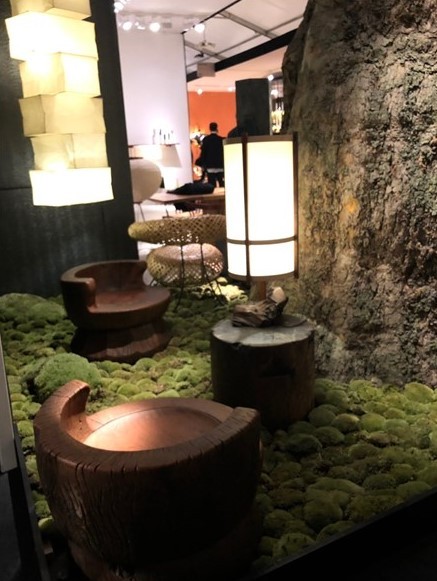
I love how they kept the tree inside the event and let it be a part of the show.

It is very interesting to always look around and see the difference in the ways each studio control their space. The backgrounds of each area were significantly sitting up on purpose.

No end of interesting works.
0 notes
Photo
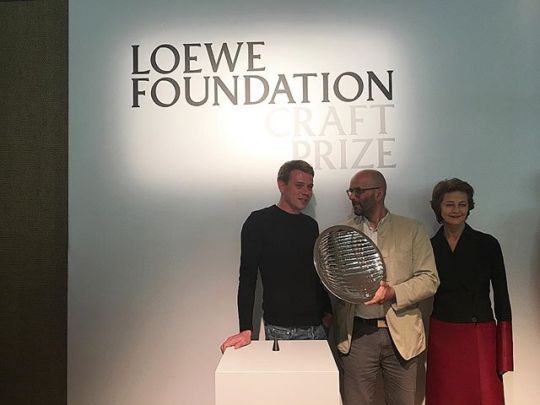
Aujourd'hui à Madrid, Charlotte Rampling et le designer JW Anderson ont remis le 1er Loewe Craft Prize, récompensant l'artisan Ernst Gamperl pour ses sublimes objets en bois de chêne. La foundation Loewe a réuni un jury autour d'objets design du monde entier, entre céramique et fresques brodées. ❤ @loewe @loewefoundation #loewe #loewefoundation #loewecraftprize
0 notes
Photo

Loewe Craft Prize "There are more exciting things going on in craft right now than in contemporary art," - Jonathan Anderson, before announcing the winner of the 2017 'Loewe Craft Prize' in Madrid. Artisans in a vast array of disciplines, ceramics, glass, textiles and woodwork from as far afield as Israel, Canada, Argentina, Japan and the UK were represented in the ‘Loewe Craft Prize’ shortlist, which was whittled down from an astonishing 4,000 submissions. The 50,000 euro prize was awarded by the English actress Charlotte Rampling to Ernst Gamperl of Germany whose series of majestic wood vessels were meticulously carved from a fallen 300 year old oak tree. The prize is a new initiative conceived by Loewe’s creative director Jonathan Anderson, who is a passionate admirer and collector of 20th-century art and craft. The ‘Loewe Craft Prize’ was launched last year by the Loewe Foundation, a private cultural foundation originally established in 1988 by the owner Enrique Loewe, a fourth-generation of member of the Spanish luxury brand’s founding family. The aim of the prize is to “showcase and celebrate newness, excellence and artistic merit in modern craftsmanship”. Anderson has been the creative director of Loewe since 2013. The winner of the first ‘Loewe Craft Prize’ was decided by a panel of judges composing of 10 professionals: Jonathan Anderson, Enrique Loewe, great-grand-son of the founder of the house and honorary president of the foundation, Gijs Bakker, Rolf Fehlbaum, Naoto Fukasawa, Deyan Sudjic, Benedetta Tagliablue, Stefano Tonchi, Patricia Urquiola and Anatxu Zabalbeascoa. The prize aims to commend artisanal excellence and draw attention to unsung design fields with significant emphasis on artistic dimension and the influence of modern crafts. #chapeaulondon #chapeaublog #dedicatedtothethingswelove #wordsandpictures #amazing #london #lifestyle #loewecraftprize #loewe #jonathananderson #art #craft #ceramics #textiles #glass #woodwork #milan #artisans #craftmanship (at Milan, Italy)
#wordsandpictures#woodwork#textiles#amazing#loewe#art#craftmanship#jonathananderson#dedicatedtothethingswelove#lifestyle#chapeaulondon#london#chapeaublog#milan#glass#artisans#ceramics#loewecraftprize#craft
0 notes


